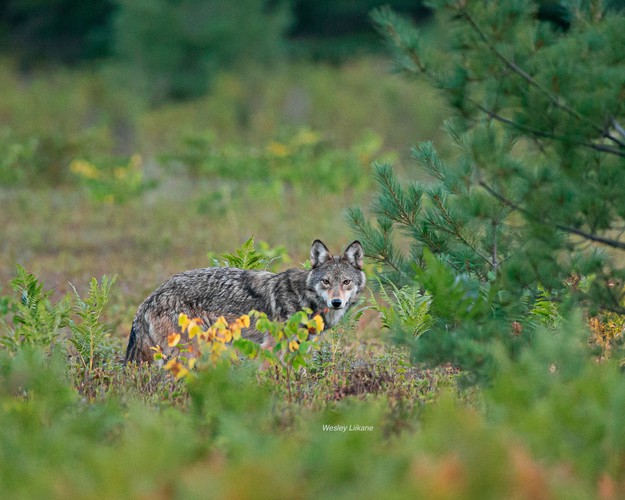Eastern Wolf Survey Program
Registered Name: EARTHROOTS FUND
Business No: 135165140RR0001
This organization is designated by Canada Revenue Agency (CRA) as a registered charity. They comply with the CRA's requirements and has been issued a charitable registration number.

The Eastern Wolf faces an uncertain future. Habitat loss, fragmentation, and hunting and trapping have resulted in a declining Eastern Wolf population. Once a flourishing species, there are less than 500 Eastern Wolves remaining today.
Eastern Wolves have a crucial role in keeping ecosystems balanced and healthy. They are a keystone species and influence the abundance and type of other species in their habitat. The loss of the Eastern Wolf would have a critical impact on the ecosystem’s health and biodiversity.
Current wolf protection areas are based on outdated studies. Your support will help us expand our citizen scientist program to collect DNA samples of wolves and show their true range. Through community driven science, we can advocate for protected spaces for this protected species.
Eastern Wolves were listed as a Threatened species in Ontario in 2016, triggering a process mandated by the Endangered Species Act to create a science-based Recovery Strategy to recommend to the Ontario government how best to bring the population back from the brink of extinction. A draft Recovery Strategy was released, and it included best available science at the time. The management approaches to sustain the Eastern wolf species that were identified within the Strategy are broad and will benefit from more detail and refinement, and further research to gain a better global understanding of the Eastern Wolf’s story. The Recovery Strategy was due in June 2018 and recommends connecting protected areas across central Ontario to create an Eastern Wolf Recovery Zone. Although mandated, the Recovery Strategy remains in limbo due to lack of sufficient data. This delay, while detrimental to the species, highlights the importance of filling in knowledge gaps.
Today, Eastern Wolves are only fully protected in and around 4 provincial parks where they had already been confirmed through DNA analysis. Elsewhere, Eastern Wolves can be hunted, in some places without limit, and trapped without limit everywhere. These unprotected areas constitute much of the Eastern Wolf’s suspected range, which may extend from Sault Ste Marie to Fenelon Falls, and west into Quebec.
Earthroots DNA-based research project, adapts genetic methods that were initially developed by Trent University researchers which aimed to identify Eastern Wolves in various provincial parks. We have expanded the same surveying to all unprotected areas between parks in the species’ suspected range. DNA scat samples are collected non-invasively by citizen scientists that we train and equip with DNA sampling kits.
Following analysis of the samples a Genetic Characterization report is produced by Trent University Natural Resources DNA Profiling & Forensic Centre. The report provides a summary of sexing, mtDNA haplotype, and nuDNA microsatellite results and identifies what species the sample comes from (Eastern Wolf/Coyote/Great Lakes Wolf). We are then able to update distribution maps through the Natural Heritage Information Centre and various data sets for use in conservation documents (e.g. Ontario Recovery Strategy, Canada Recovery Strategy, future species-at-risk evaluations).
The DNA analysis provides a unique signature (like a fingerprint) allowing us to track location and minimum age if more than one sample is found, providing evidence that shows exactly where the species is frequently found in unprotected areas. It also allows us to identify an individual to a species (Eastern wolf, Grey wolf, eastern coyote), and sex (male/female). Scat samples can then be contributed to other studies. In the past, our samples have contributed to a PhD study on the diet of the wolves and coyotes, and a MSc project building family trees to determine if hunting and trapping regulations affect social structures outside of Algonquin Park.
Through the Eastern Wolf Survey Program, Earthroots works to increase protected areas for Eastern Wolves by providing scientific evidence to advise Conservation Policy and Recovery Strategies.
.png)